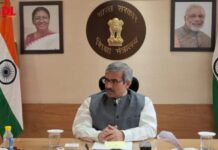Software Investment Promotion Agency (SIPA) is the government agency in planning and policy making for the software industrial development of Thailand. Apart from main missions related to promotion of software industry, it promotes teachers and students to learn advanced skills in software development, helps speeding up the development of personnel with skills for making animation and multimedia applications, promotes software developers to take exams to earn professional certifications, and supports the firms to introduce their products in international markets, besides promoting the use and development of Open Source applications. Manoo Ordeedolchest, the President of SIPA speaking more on SIPA’s contribution to e-learning in an exclusive conversation with Rumi Mallick of Digital Learning.
What is the vision of SIPA in terms of driving the IT industry?
Our mission is to develop the software industry of Thailand. By doing so we have been doing development, which has two dimensions- one is, increasing competitiveness against our neighbours, and for that we are continuously upgrading our skills in the sub-arena. Second is, to expand the software domain so that we can have a bigger market. By software domain we mean adding new categories to software domain like embedded software. Thailand has been concentrating only on the enterprise software. We have noticed that the mobile phone industry in Thailand is increased dramatically. So we have learnt that there will be the need for a lot of software to run on mobile devices. Actually we add on to accessing enterprise software. So our mission is strategised for a software market up to a point we feel that we are comfortably recognised in the world arena.
For the new start up companies, how do you facilitate young entrepreneurs to want to set up their company?
We have been doing two things. One is to encourage the entrepreneur in the area of animation and the enterprise software. For past three years, we conduct training programmes in animation multimedia and also help them in setting up their companies. Secondly, we at present are working with Board of Investments (BOI), the government progarmme for investment promotion. No matter whether you are a foreign company or a Thai one; if you set up a company, you are entitled to eight years tax holiday, and this is for all companies, not the start up companies.
What are the biggest infrastructure challenges in integrating ICT in education?
First of all, the degree of comprehension is how to change the way people teach the youngster when they apply e-learning. We have also been teaching people outside Bangkok, in rural area. These people are quite not nourishable. The rural area is a big issue. You cannot just give them a computer. And we expect that the process or the quality of teaching would improve with the ability to comprehend ICT in order for teachers to adopt themselves to the new way of teaching. For the remote area the infrastructure is not that good. In these areas the broadband Internet is not available. This is one problem to think, how to solve it. Then we have experience of supporting some schools in providing some computer. But again the teacher who has ICT knowledge do not stay in one place, he keeps on moving. So after few time, after getting the operational knowledge he might move making the teaching process coming to halt. Infrastructure of telecommunication, to use Internet properly, are the infrastructure problem. Content is another big issue. The teachers have no reasonable comprehension of how to use the electronic content in teaching.
How are you engaged in education?
We work together with Ministry of Education (MOE) to come up with a certain kind of curriculum specifically on computer graphic. This year we do for 1000 schools teachers. And we offer them one or two courses in computer graphic; we provide them e-book, a simple tool, so that when they go back to school they can apply the exercises of e-book on computer graphic.
Is it conducted in Bangkok only or in other region?
We conduct this in four regions- in east, in north, in south and the central point.
All government regions!
Yes, many government regions.
Is it mandatory for the teachers to attend?
No, we work with ministry of education that selects which school has to get the exercise. Those are the schools government has planned to install computers.
You train 1000 teachers every year!
We have done the first batch of 1000 teachers last year. Now this is the second batch of 1000 teachers.
Is there any feedback of the system?
Yes, we have done some follow up. The teachers when will go back they have to have some students with whom they can continue. Because, the school they select must have some computer system. What we cannot get confirmation is the percentage; we randomly check whether they actively continue.
In fact, last year we have proposed to have a central server, but we have not get necessary budget to support the programme. With that, each teacher when develop content, we will put them into central server. So if I do some work, you can download my work, you can enhance it and you can share your e-learning content with your peer. The content will improve by this. So that’s the second approach.
The service you talk about – is that primarily being developed by SIPA?
Yes, if we get the budget. Most of the projects we initiate, we don’t own it. We first initiate and then try to find some owner. We build the concept and make it happen.
So when MOE and SIPA are working together, does it mean MOE initiates the project and then SIPA comes into the picture?
MOE has its own project. And if a particular project we initiate and if we see that it is useful for them, we invite them to join us.
Are you guiding MOE in technology matters? Although the government departments have a lot of technology integrated, they don’t have the expertise.
This is one thing we have to be careful. When you are working with a ministry, say if they don’t come and say SIPA, please help, then normally we call it in the other way. Because we don’t know whether they like or accept our proposal. The project I have been talking to you earlier, that has a different approach. There we said, this is our idea, this is the way we should do and you see our budget. MOE please come and help, its good for you too.
Who else is partnering you in e-learning?
Industry, private companies and some overseas agency like Korea. Often we work with some government agencies having similar vision. Normally they help us in certain subject matter and at<
















